Langzhong Ancient City is located in Langzhong City, Nanchong City, Sichuan Province, in the northeastern part of Sichuan Province and the upper-middle reaches of the Jialing River. The total area of the scenic area is 4.59 square kilometers, with a core area of 2 square kilometers, and currently retains a historical style area of about 1.78 square kilometers. As one of China's four major ancient cities, Langzhong Ancient City is also a national 5A-level tourist attraction. It integrates mountains, water and the city into one, and its site selection and layout conform to the traditional Chinese feng shui pattern of "left Azure Dragon, right White Tiger, front Vermilion Bird and back Black Tortoise". Up to now, it still preserves nearly 2 square kilometers of ancient streets and lanes with the layout of the Tang and Song dynasties and the style of the Ming and Qing dynasties. There are more than 100 courtyard houses with architectural styles of the Ming and Qing dynasties in the ancient city, as well as more than 90 historical streets such as Dadong Street, Shanghua Street and Xuedao Street. The architectural form is elegant and simple, which not only retains the architectural characteristics of northern Sichuan, but also absorbs the architectural advantages of northern quadrangles and southern gardens. Therefore, it is known as "the Treasure House of Ancient Bashu Architecture" and "the Encyclopedia of Chinese Folk Architecture".
Historical Culture
Langzhong Ancient City has a long history of more than 2,300 years of urban construction. During the Warring States Period, it once served as the capital of the ancient Ba State; in the late Ming and early Qing dynasties, it also served as the capital of Sichuan Province for 20 years. Throughout the dynasties, it has been the seat of prefectures, states, governments, roads, and military towns. As early as the Neolithic Age, there were humans living in the Langzhong area. During the Shang and Zhou dynasties, this place was the capital of the Peng State. Later, the Ba State conquered the Peng State, and Langzhong came under the rule of the Ba State. During the Warring States Period, the Ba State moved its capital to Langzhong, making it a political and administrative center. After the Qin State conquered the Ba State, it set up counties, and the name "Langzhong" was officially established.
During the reign of Emperor Gaozong of the Tang Dynasty, Prince Lu Lingkui and Prince Teng Yuanying successively served as prefects of Langzhong, rebuilt and expanded the government office, and built large-scale palaces and gardens. In the early years of the Northern Song Dynasty, Baoning Prefecture rebuilt the site and city of Langzhong according to feng shui theory, which took 28 years and employed 200,000 laborers. Since then, the city walls and other structures have been repaired and rebuilt during the Ming and Qing dynasties. During the War of Resistance against Japanese Aggression, the Sichuan-Shaanxi-Hubei Border Region Pacification Office and the Bashan Garrison Command were located in Langzhong. After the founding of the People's Republic of China, a protection plan for the ancient city was formulated, and scenic spots were repaired and expanded. In 1986, Langzhong Ancient City was recognized as a National Historical and Cultural City by the State Council.
Langzhong Ancient City is rich in cultural resources. It has feng shui culture represented by mountains and rivers, and its architectural style and site selection reflect the ancient concept of residential feng shui; relics such as Zhang Fei Temple represent the Three Kingdoms culture, and Zhang Fei stationed in Langzhong for seven years; it is also an important carrier of imperial examination culture, and the Chuanbei Dao Gongyuan is the most well-preserved imperial examination museum in the country; in addition, Langzhong is also known as the "Hometown of Chinese Spring Festival Culture".
Main Attractions
Han Huanhou Temple (Zhang Fei Temple)
It is a place to commemorate Zhang Fei, a famous general of the Shu Han during the Three Kingdoms Period, who stationed in Langzhong for seven years. The temple was first built in the late Eastern Han Dynasty, and most of the existing buildings were constructed during the Ming and Qing dynasties. It consists of a mountain gate, Diwan Tower, left and right archways, east and west wing rooms, a main hall, a back hall, a tomb pavilion, and a tomb, with a construction area of 2,200 square meters. Visitors can recall Zhang Fei here and feel the culture of the Three Kingdoms.

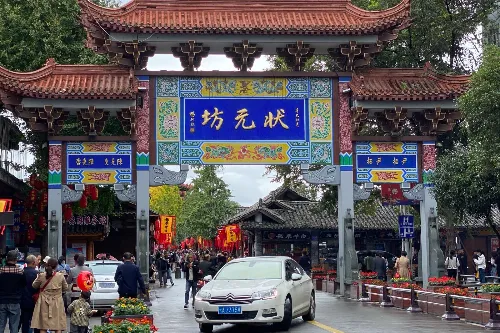

Chuanbei Dao Gongyuan (North Sichuan Dao Examination Hall)
It is a place for selecting talents during the imperial examination era and is also the most well-preserved imperial examination museum in the country. It was first built during the Jiaqing period of the Qing Dynasty and consists of a mountain gate, corridors, examination rooms, a main hall, a second hall, a back hall, and candidates' dormitories. The existing roll-shed style corridors are more than 50 meters long in total, with wooden railings on both sides of the corridors equipped with Feixian chairs. The left and right rows of examination rooms are separated from each other, decorated with carvings. Visitors can experience activities such as crossing the Dragon Gate and entering the examination rooms here to learn about the ancient imperial examination system.
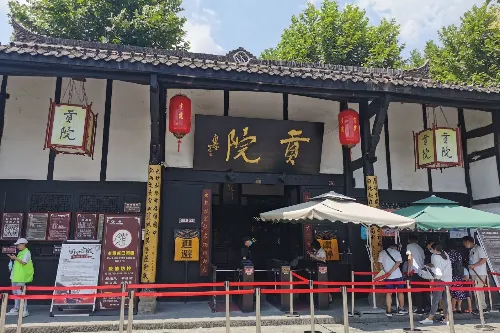
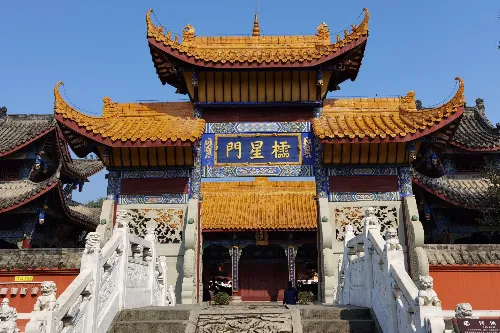
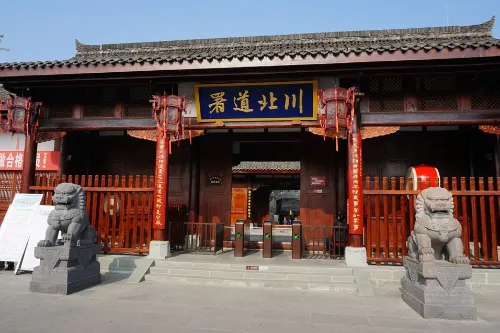
Huaguang Tower
Originally named South Tower, also known as Zhenjiang Tower, it was first built in the Tang Dynasty by Li Yuanying, Prince Teng. The tower is 36 meters high in total and is built on a 5-meter-high stone arch, being the first tower in Langyuan. Climbing this tower, you can overlook the ancient city, the Jialing River, and the scenery of Jinping Mountain, making it a popular photo spot.
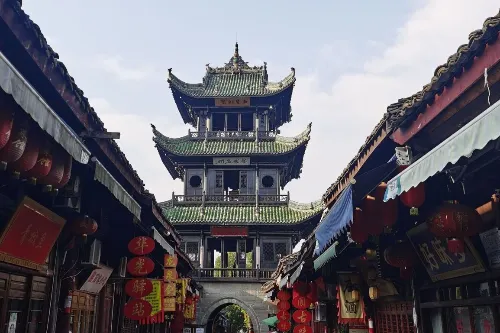

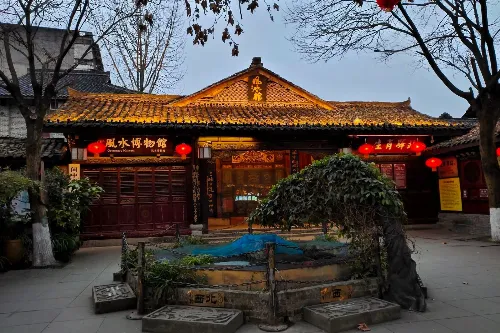
Zhongtian Tower
Also known as Sipaulou, it is the feng shui coordinate of Langzhong Ancient City and is called "the First Feng Shui Tower of Langzhong". First built in the Tang Dynasty, it is located in the central area of the ancient city, and the ancient city developed and expanded around it. Compared with Huaguang Tower, its roof and wooden beams have many exquisite carvings, making it more delicate and ancient.
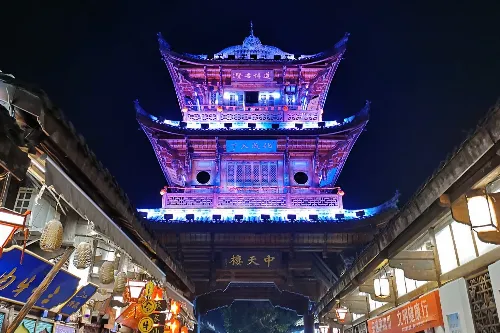
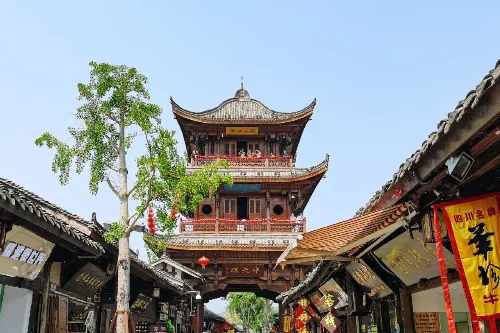
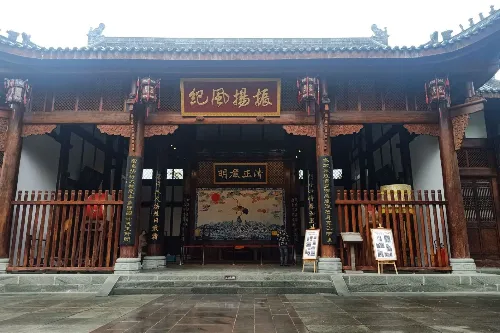
Tengwang Pavilion
It was built when Li Yuanying, the 22nd son of Emperor Gaozu of the Tang Dynasty, served as the governor of Longzhou, and it was his place for amusement. It is located on a relatively high terrain, surrounded by green trees, and the pavilion architecture has an ancient and elegant style. Visitors can enjoy the beauty of Langzhong from different angles during the climb, and the pavilion also displays a large number of historical relics and calligraphy and painting works, showing the historical culture of the ancient city.
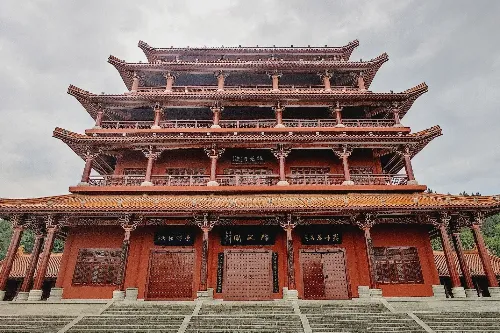
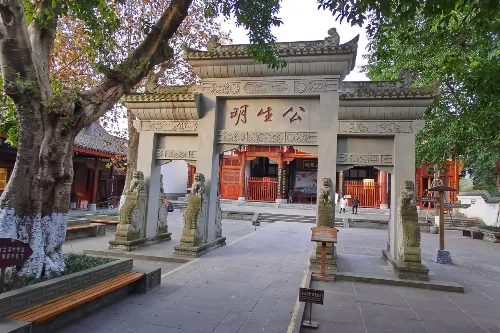
Guanyin Temple
Originally named Kaiyuan Temple, a famous temple in the Tang Dynasty, it was built in the early Tang Dynasty. It mainly consists of the Heavenly King Hall, the Arhat Hall, the Mahavira Hall, and the Songhua Well. According to historical records, until the Yuan and Ming dynasties, it was still the largest temple in Langzhong, and later replaced Kaiyuan Temple to become the largest monastery in Brazil. It has now become the Baoning Vinegar Museum.
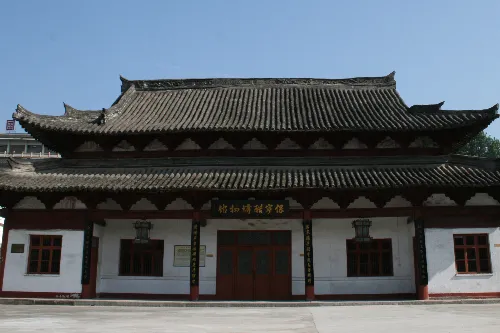
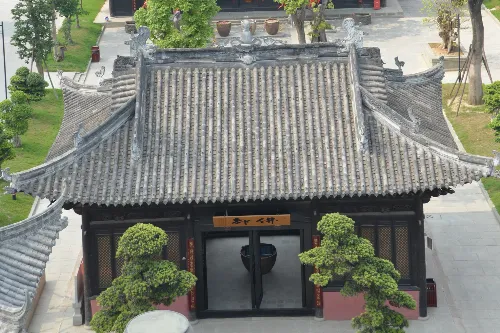
Tour Routes
One-day tour route: After entering from the entrance of the ancient city, first go to Zhongtian Tower, which is the center and feng shui coordinate of the ancient city, where you can climb high to overlook the whole view of the ancient city. Then go to Han Huanhou Temple to learn about Zhang Fei's deeds and the Three Kingdoms culture. After that, go to Chuanbei Dao Gongyuan to experience the imperial examination culture. Have lunch in the ancient city to taste the characteristic food. In the afternoon, visit Huaguang Tower to enjoy the scenery of the Jialing River. Finally, stroll through the ancient streets and lanes to feel the charm of the ancient city.
Two-day tour route: On the first day, visit Zhongtian Tower, Han Huanhou Temple, Chuanbei Dao Gongyuan, and Huaguang Tower. In the evening, enjoy the night view of the ancient city and taste the local characteristic snacks. On the second day, go to Tengwang Pavilion to feel its ancient and elegant architectural style and climb the mountain to enjoy the beauty of Langzhong. Then visit Guanyin Temple to learn about its historical changes. In the afternoon, go shopping freely in the ancient city and choose characteristic souvenirs.
Tour Suggestions
- Learn about the historical culture and attraction information of the ancient city in advance to better feel the charm of the ancient city. You can do this by reading books, watching documentaries, etc.
- Wear comfortable shoes because the tour in the ancient city is mainly on foot, and the roads in the ancient streets and lanes may be uneven.
- When tasting food, pay attention to food hygiene and choose regular stores. You can refer to the recommendations of local residents or restaurants with high online reviews.
- During the peak tourist season, book accommodation in advance to avoid delaying the trip. You can check and book hotels or homestays in or around the ancient city on major online travel platforms.
- If you are interested in feng shui culture, you can hire a local guide to explain and gain an in-depth understanding of the feng shui layout of the ancient city.
Notes
- Protect the environment of the ancient city, do not spit everywhere or litter. There are many trash cans distributed in the ancient city for convenient garbage disposal.
- Take good care of ancient buildings and cultural relics, do not touch or carve them at will. Abide by the relevant regulations on cultural relic protection in the scenic area.
- When shopping or consuming in the ancient city, understand the prices in advance to avoid unnecessary disputes. You can bargain appropriately, but pay attention to the methods.
- If you encounter problems or need help, you can go to the scenic area's tourist service center for consultation. The staff at the service center can provide services such as attraction introduction, route planning, and emergency rescue.
- When visiting in summer, take sun protection and heatstroke prevention measures, and carry sunscreen, sun hats, heatstroke prevention medicines, etc. In winter, keep warm and carry thick clothes.
Transportation
- By Air: You can first arrive at Nanchong Gaoping Airport, which is about 70 kilometers away from Langzhong Ancient City. There is an airport bus directly to Langzhong Ancient City at the airport, with a fare of about 30 yuan and a journey of about 1.5 hours. You can also take a taxi from the airport, which costs about 200 yuan.
- By Train: You can take a train to Langzhong Station. After getting out of the station, you can take buses such as Route 102 and Route 105 to the ancient city, with a fare of 1 - 2 yuan and a journey of about 30 minutes. You can also choose to take a taxi, which costs about 20 - 30 yuan.
- By Long - distance Bus: There are long - distance buses from various places to Langzhong Bus Station. After arriving at Langzhong Bus Station, you can take a city bus or a taxi to the ancient city. The fare of the city bus is generally 1 - 2 yuan, and the taxi fare is about 10 - 15 yuan.
- By Self - driving: Starting from Chengdu, drive along the Hurong Expressway, transfer to the Lanhai Expressway in Nanchong, and get off at the Langzhong exit. The whole journey is about 300 kilometers, and the driving time is about 3.5 hours. Starting from Chongqing, drive along the Lanhai Expressway and get off directly at the Langzhong exit. The whole journey is about 280 kilometers, and the driving time is about 3 hours.
Opening Hours
Langzhong Ancient City is open all day. The opening hours of various scenic spots in the ancient city are different, generally from 08:00 to 18:30. However, during the peak tourist season, holidays or special events, the opening hours may be adjusted. Visitors can pay attention to the information released by the official channels of the scenic spot in advance to arrange their trips reasonably.
Tickets
Langzhong Ancient City is open for free, but individual tickets are required for the scenic spots inside.
You can search for the official WeChat public account of the scenic spot "阆中古城景区" to get the latest news or buy tickets online.
Online Booking
Click here to jump to the Trip.com ticketing platform for ticket purchase.


